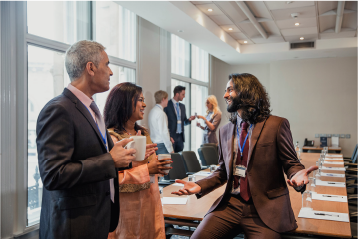We Help you<br>Prepare and Thrive<br> in the Future of Work.

We Help you<br>Prepare and Thrive<br> in the Future of Work.
Find your dream job
Quick Links
Attract & secure top talent
RECRUITMENT SOLUTIONSDevelop your leaders
LEADERSHIP DEVELOPMENTEmpower transitioning talent
CAREER TRANSITIONSElevate executive careers
BESPOKE ICEO SOLUTIONSTalent solutions built for the evolving world of work
In today's rapidly shifting landscape, success depends on having the right talent with the right skills at the right time. We empower you to navigate constant change with comprehensive solutions built to drive results.


We're here to work for you
Whether you're an individual looking to take charge of your career, an organization seeking top talent solutions, or an executive in need of tailored support, our team specializes in empowering individuals, creating comprehensive talent solutions, and supporting transformative leaders.

Individuals
Take charge of your career with the help of experienced recruiters and career advisors ready to help you find your next opportunity, evolve your skills, or take your career to the next level.

Organizations
Amid economic uncertainty, evolving business needs and competing priorities, stay competitive by aligning workforce capabilities and talent strategy with our proven solutions and expert guidance.

Executives
Great leadership drives success. Our seasoned experts specialize in developing transformative leaders, and supporting executive search, placement, coaching or advisory opportunities.
Your partner in career and workforce transformation
With a personalized, empathetic approach and proven track record, we are here for you to achieve your career and business goals.
Find your dream job
SEARCH JOBSFind & attract great hires
RECRUITMENT SOLUTIONSSearch for top talent
CANDIDATE SEARCHFuture proof your workforce
CAREER MOBILITY SOLUTIONSDevelop your leadership team
LEADERSHIP DEVELOPMENT Empower transitioning talent
EMPATHETIC CAREER TRANSITIONSGlobal workforce trends
Build a winning talent strategy for the future. Get the latest workplace trends and learn how to attract and, most importantly, retain top talent.
Global workforce trends
Build a winning talent strategy for the future. Get the latest workplace trends and learn how to attract and, most importantly, retain top talent.
Driving global impact for you
We are trusted partner delivering impact through customized solutions for thousands of diverse companies. The results speak for themselves:
500,000+
PEOPLE SUPPORTED
helping professionals across many
disciplines reach their career goals
disciplines reach their career goals
30,000+
CLIENTS
access to a global network of potential
employers to find the next best job
employers to find the next best job
8,000+
COLLEAGUES AND EXPERTS
well-versed in the nuances of each job
market and ready to serve
market and ready to serve
2,400+
SUCCESS STORIES
helping people transition to new jobs
and improve their professional lives
and improve their professional lives
66
COUNTRIES WORLDWIDE
global and local reach, and market
insights for companies of all sizes
insights for companies of all sizes
50+
YEARS OF EXPERIENCE
making LHH the ideal choice to help
meet your career and business goals
meet your career and business goals
Are you Ready for Next?
LHH helps individuals, teams, and organizations find and prepare for what's next in the world of work. We support clients needs throughout the talent journey, from recruitment to career transitions and leadership development. We empower organizations to expand their capabilities and workers to build brighter futures.